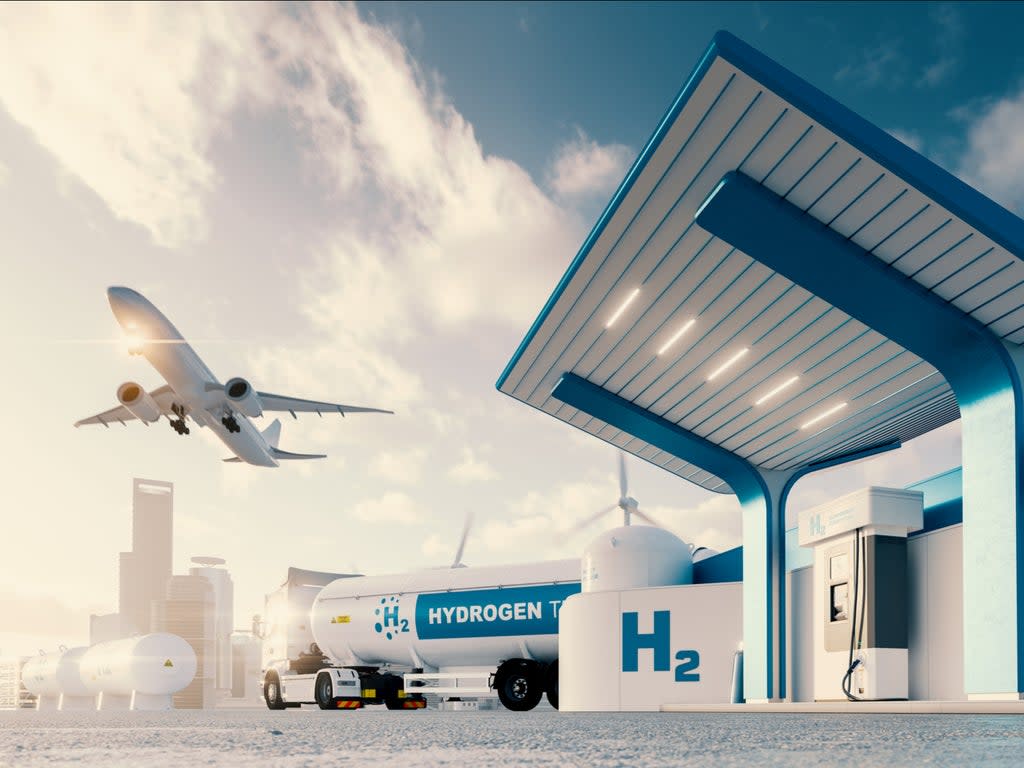Is hydrogen really the miracle fuel of the future?

With little fanfare, three months ahead of the Cop26 climate summit, the government on Tuesday launched its “Hydrogen Strategy”, which makes some astonishing claims.
Despite hydrogen contributing a minuscule part of the UK’s energy and fuel mix at the moment, the government has suggested up to 35 per cent of the UK’s energy consumption by 2050 could be hydrogen-based.
You could be forgiven for not knowing much about this fuel, with many people’s strongest association with the gas being the fiery demise of the Hindenburg airship in 1937.
Today, if hydrogen is produced through using renewable energy, it is clean, can be highly efficient, and like any other flammable gas, if correctly managed, is safe.
However, there have been teething issues with the latest generation of hydrogen facilities, with explosions in California and South Korea, both in 2019, generating local backlash to the placement of hydrogen-fuel sites.
These remain minor setbacks and the fuel has recently come to represent the future hopes of many industries struggling to move away from fossil fuel dependency.
And move away they must – fast. The UK’s legally binding climate targets dictate the country must hit net zero emissions by 2050, with plans to cut emissions by 78 per cent by 2035.
While the energy sector is decarbonising fairly quickly, with more and more renewables becoming available, and private road transport is on course for reductions in the future with a growth in the number of electric vehicles available and a ban on new combustion engine-based models from 2030, heavy industry still has no clear roadmap for major emissions cuts.
These advances have been characterised as being the “low-hanging fruit” in the effort to cut greenhouse gases, while much more demanding changes must be made if we are really going to hit net zero.
Steel production, chemicals production, other heavy manufacturing processes, shipping and aviation are among the sectors for which switching from using industrial quantities of fossil fuels to clean electricity alone is not necessarily an option.
Much heavy industry is reliant on the huge heat and force unleashed by combustion. This is where hydrogen-based fuels can step in, and largely be “dropped in” to existing fossil fuel apparatus.
However, there are mounting concerns about how hydrogen-based fuels are produced and their overall impact on the environment.
Producing hydrogen is an energy-hungry process in itself, and unless all the hydrogen is produced using renewable energy, such as wind or solar, then rising demand for hydrogen fuels to replace fossil fuels could serve to lock in greater dependence on fossil fuels.
There are two main types of hydrogen production the UK government is interested in, known as “green hydrogen” and “blue hydrogen”.
Green hydrogen is made by splitting water into hydrogen and oxygen using electrolysis, with the necessary electricity provided by renewable sources.
Blue hydrogen is produced through mixing natural gas with hot steam in the presence of a catalyst. This creates hydrogen and carbon monoxide. Water is added to the mixture, which converts the carbon monoxide into carbon dioxide and also creates more hydrogen.
The resultant carbon dioxide emissions are then, in theory, captured and stored using “carbon capture and storage” technology.
But research released this month by academics at Cornell and Stanford universities has warned that the blue hydrogen process could generate 20 per cent more emissions over its life cycle than burning the natural gas in the first instance – and possibly even more.
Greenpeace is among the organisations warning the government that the blue hydrogen part of its plan, “looks like a bad idea both environmentally and economically”.
Ineos, named the biggest climate polluter in Scotland, and also one of the UK’s biggest producers of hydrogen, is among the companies which has welcomed the government’s new strategy.
In a statement the company said it would “continue to prioritise the production of green hydrogen which is made from water electrolysis powered by renewable energy, but it will also support the production of blue hydrogen when the carbon produced can be safely captured and stored underground.”
The government has also suggested blending hydrogen with natural gas for domestic consumption – a move which has alarmed those urging a bigger shift away from gas boilers for heating purposes.
But the suggestion has been welcomed by the Energy and Utilities Alliance, which speaks on behalf of members in the heating industry.
The organisation’s chief executive Mike Foster said: “We are enthused to see the government also recognise the role a hydrogen blend into the grid will play in reducing carbon emissions without homeowners needing to change appliances or boilers. It is of great importance that the transition to hydrogen does not cause disruption or large costs to consumers.
“The blend is a way to significantly reduce emissions with no change, which will in turn leave time for the groundwork to be laid for a seamless switch to 100 per cent hydrogen later on.”
The government’s announcement will certainly provide the confidence needed for more firms to invest in hydrogen technology, but a rapid scaling up in demand for the fuel – outstripping the truly beneficial “green hydrogen”, will lock in greater dependency on fossil fuels, worsening the climate crisis.
Read More
Fast fashion is dying African rivers blue, report says
Hundreds of firefighters battle wildfire in southern France
Climate crisis: Can going vegan save the world?
UK steps up fight against ‘indescribably cruel’ shark fin trade
American hunter kills lion with bow and arrow in Zimbabwe

 Yahoo News
Yahoo News 
